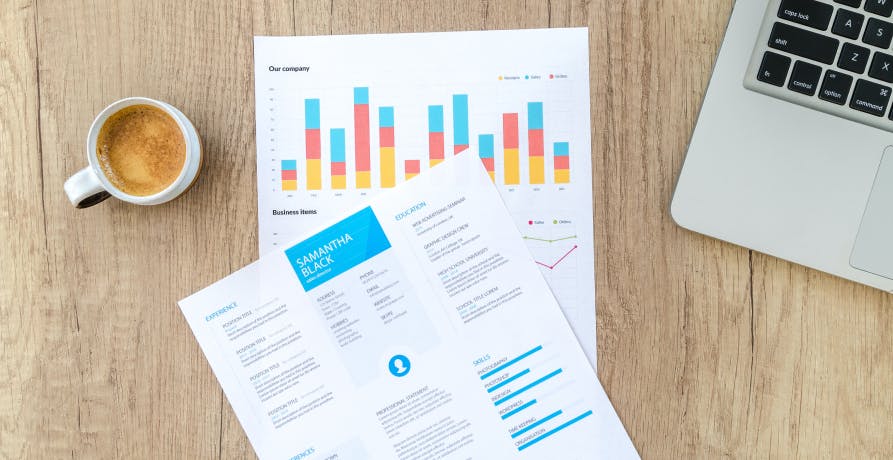
What are the 3 Pillars of Corporate Sustainability?
In this article, we'll explore what the 3 pillars of corporate responsibility are, why they're important, and how businesses can turn them into practical action.
ESG / CSR
Industries



The U.S. is the second largest greenhouse gas emitting country in the world – meaning it’s time for them to get serious about climate change and implement legislation to control the rate of carbon emissions, such as the new Federal Supplier Climate Risks and Resilience Rule.
What is the new Federal Supplier Climate Risks and Resilience Rule, and how will it help the U.S. to cut back on carbon emissions?
Before diving into the specifics of the potential Federal Supplier Climate Risks and Resilience Rule, it’s first important to understand what federal suppliers are in the first place. Federal suppliers are the suppliers who provide raw materials or other necessary components to fuel a company doing business with the government.
Federal suppliers are composed of a business supply chain. A supply chain is the group of multivarious parties, when together, are responsible for the production of a product – meaning that federal suppliers could provide businesses with items such as raw materials or helping with the manufacturing of the product itself. For instance, the factory that produces the glass bottles to be used for soda is a part of the supply chain for a soda company. In terms of a federal supplier, an example would be the company providing the materials necessary to manufacture FFP2 face masks or at home Covid-19 testing kits. All of these companies are working in conjunction with the federal government to help provide these items to American citizens – making them federal suppliers.

Supply chains start with the suppliers that provide the materials necessary to create the product and end in the method of transportation used to deliver that product. For companies seeking to reduce their environmental impact, it’s important to understand the carbon footprint of their suppliers – as they contribute to the overall emissions created by a business.
How do federal suppliers correlate to the new, potential Federal Supplier Climate Risks and Resilience Rule?
There is a reason why things like supply tiering have become so popular amongst companies trying to take control of their greenhouse gas emissions – and it’s because it can help companies determine exactly where their emissions are coming from and how to reduce them.
As a whole, the activities executed by businesses working with the federal government are done on a larger scale than other businesses. For instance, the best example remains the efforts made by the U.S. government to quickly manufacture masks, PPE, and at home Covid-19 testing kits in order to curb the negative effects of the pandemic. In comparison to other businesses, such as a brewing company which doesn’t work alongside the federal government, federal suppliers are contributing to companies producing at a larger scale – meaning the carbon footprint is bound to be larger than other commercial companies. Also, seeing as these federal businesses could impact people on a greater scale – the disclosures to be provided by the Federal Supplier Climate Risks and Resilience Rule could help to avoid taking climate risks that could have a negative effect on American citizens.
Therefore, it’s crucial to hold federal suppliers accountable to their climate risks if the U.S. government is determined to create better transparency in terms of carbon accounting.
The new Federal Supplier Climate Risks and Resilience Rule isn’t the only legislative matter in the U.S. to make an attempt to standardize greenhouse gas emissions disclosures. Here are a few of the ways that companies could take control of their greenhouse gas emissions and the potential risks associated with excessive emissions.
The TCFD, otherwise known as the Task Force on Climate-Related Financial Disclosures, has previously recommended companies to delineate their governance tactics, methods of handling risk managements, and their current targets. The TCFD encourages all of these tactics, and also provides advice on how to help companies successfully implement these models and goals into their business plans.
The Science Based Targets Initiative, otherwise known as SBTi, can help to provide businesses with a guideline on how to reduce their greenhouse gas emissions in correlation with the goals depicted in the Paris Agreement.
Organizations, such as the formerly known Carbon Disclosure Project, can help companies build transparency by reporting their emissions and climate risks to other parties – such as business partners or potential stakeholders.

While this appears to be an obvious tactic, most companies fail to measure their emissions to begin with – making it difficult to set goals to reduce their emissions and environmental impact. Think of training for a marathon without knowing the current stamina or distance a runner is capable of running. Without a starting point of knowledge, it is difficult to set realistic goals for improvement. The same goes for companies that are determined to take control of their greenhouse gas emissions and associated climate risks.
The World Resources Institute and the World Business Council for Sustainable Development have developed a global standard for measuring a company's greenhouse gas emissions. This includes measuring a company's scope 1, scope 2 and scope 3 emissions.
Carbon accounting is divided between three different categories of carbon emissions, better known as, “scopes”. Emissions. Scope emissions 1, 2, and 3 help to simplify the process of measuring one’s carbon footprint.
The Greenhouse Gas Protocol has clarified that emissions created by companies can be classified into scopes depending on how those emissions are produced. For instance, they could come from mass production, transportation, or electricity consumption. These categories usually pertain to scope emissions 1 and 2.
Scope 1 emissions are created directly from industrial activity or the vehicles used in a company. Therefore, the carbon footprint created by a production line or how often an employee fills up the company car for gas – all contribute to scope 1 emissions. The use of fuel, non-renewable energy sources like fossil fuels, greenhouse gasses, or oils, chemical leaks, and the energy used in office buildings or other various facilities would also fall under scope 1 emissions.
Scope 2 emissions include anything that requires energy consumption, like the electricity needed to run an office building, central heating or air conditioning, or leased vehicles.
In short, scope 1 and 2 emissions are 100% in the control of a company’s actions – as their business models can be altered to accommodate a world suffering from climate change. Scope 3 emissions, on the other hand, are created by a source outside of the company.

Scope 3 emissions are all additional activities that create emissions that do not fall under scopes 1 or 2. Such activities could include the use of raw materials, purchased goods or services, transportation such as the carbon footprint created by an employee’s commute to work, leased assets, franchises, investments, and business travel. Therefore, Scope 3 emissions are infamously the most difficult emissions to measure.
How will the new federal supplier climate risks and resilience rule help companies to improve their measurements regarding their scope emissions?
The Federal Supplier Climate Risks and Resilience Rule is essential for a country like the U.S. – as the United States remains the world’s largest purchaser of goods and services, many of which are often culprits to continued climate change. As the U.S. remains as a pivotal actor in the global purchasing of goods and services, the federal government will continue to be threatened by the financial risks associated with climate change. This is precisely why so many companies have become interested in sustainability concepts such as supply tiering, as it helps to prioritize which components of the supply chain deserve the most attention – and ultimately helps to organize a company’s carbon footprint. Therefore, one of the main benefits from the Federal Supplier Climate Risks and Resilience Rule would be how it could decrease the vulnerability of federal supply chains – and in turn, help to mitigate climate risks.

With the potential Federal Supplier Climate Risks and Resilience Rule – large federal contractors, or those entitled to more than $50 million in revenue from their annual contracts, will be asked to disclose their scope 1, scope 2, and scope 3 emissions in order to mitigate financial risks that could potentially impact climate change. In addition to this, it will be made compulsory for these federal contractors to delineate their emission reduction plans through the use of science-based data to employ those emission reduction strategies. The Federal Supplier Climate Risks and Resilience Rule wouldn’t just apply to major federal contractors, but these rules would partially extend to federal contractors that make $7.5 million with their yearly contracts – as they would be required to report their scope 1 and scope 2 emissions. Any federal contractor that does not meet the $7.5 million threshold would not have to comply with the regulations depicted in the Federal Supplier Climate Risks and Resilience Proposed Rule.
How likely is it that the Federal Supplier Climate Risks and Resilience Rule could help to curb emissions?
According to the Environmental Protection Agency, emissions had decreased by 11% from 2019 to 2020 during the Covid-19 pandemic – revealing how much of emissions are the source of human or federal activity. If federal suppliers are forced to monitor all three of their scope emissions, report them, and establish concrete plans to reduce those emissions with the help of scientific data – it can greatly influence not only the federal government to reduce their emissions, but also set a national standard and example for the rest of businesses in the United States.
Businesses want to appeal to investors and future customers, and if federal suppliers are forced to comply with these new disclosures to prevent excessive emissions – other companies might feel compelled to do the same.
The fight against climate change is a marathon, but it’s impossible to train for a marathon without knowing what needs to be done to improve. If all goes according to plan and the Federal Supplier Climate Risks and Resilience Rule is passed – the Biden Administration could make another leap in this long battle to save our planet.
If reading this article about the federal supplier climate risks and resilience rule has made you interested in reducing your carbon emissions to further fight against climate change – Greenly can help you!
Greenly can help you make an environmental change for the better, starting with a carbon footprint assessment to know how much carbon emissions your company produces.
The Federal Supplier and Climate Risks and Resilience Rule is just one of the many new regulations being passed for climate change in 2023. Having trouble keeping up with all of the new environmental legislation your company has to comply with? Check out our legislation tracker here.